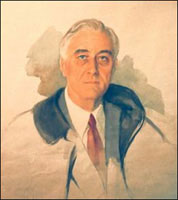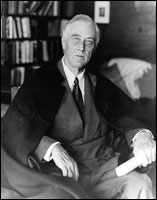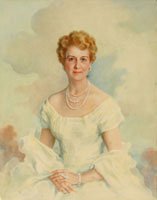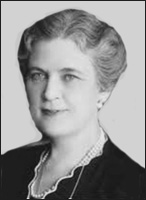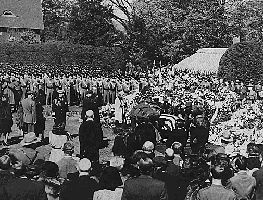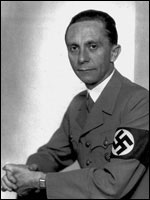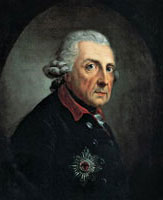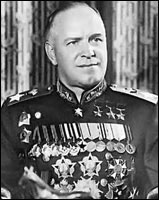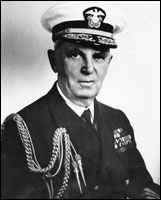Russian President, Saudi Spy Chief Discussed Syria, Egypt
A diplomatic report about the “stormy meeting” in July between Russian President Vladimir Putin and Saudi intelligence chief Prince Bandar bin Sultan concluded that the region stretching from North Africa to Chechnya and from Iran to Syria — in other words, the entire Middle East — has come under the influence of an open US-Russian face-off and that “it is not unlikely that things [will] take a dramatic turn in Lebanon, in both the political and security senses, in light of the major Saudi decision to respond to Hezbollah’s involvement in the Syrian crisis.”
The report starts by presenting the conditions under which the Russian-Saudi meeting was convened. It states that Prince Bandar, in coordination with the Americans and some European partners, proposed to Saudi King Abdullah bin Abdul Aziz that Bandar visit Moscow and employ the carrot-and-stick approach, which is used in most negotiators, and offer the Russian leadership political, economic, military and security enticements in return for concessions on several regional issues, in particular Syria and Iran.
King Abdullah agreed with the proposal and contacted President Putin on July 30. In a conversation that lasted only a few minutes, they agreed to Bandar’s visit and to keep it under wraps. Bandar arrived in Moscow. The visit was secret. The Saudi Embassy did not follow the usual protocol for Saudi officials visiting Russia.
In Moscow, a preliminary session was held at Russian military intelligence headquarters between Bandar and the director of Russian Military Intelligence, Gen. Igor Sergon. The meeting focused on security cooperation between the two countries. Bandar then visited Putin’s house on the outskirts of the Russian capital, where they held a closed-door bilateral meeting that lasted four hours. They discussed the agenda, which consisted of bilateral issues and a number of regional and international matters in which the two countries share interest.
Bilateral relations
At the bilateral level, Bandar relayed the Saudi king’s greetings to Putin and the king’s emphasis on the importance of developing the bilateral relationship. He also told Putin that the king would bless any understanding reached during the visit. Bandar also said, however, that “any understanding we reach in this meeting will not only be a Saudi-Russian understanding, but will also be an American-Russian understanding. I have spoken with the Americans before the visit, and they pledged to commit to any understandings that we may reach, especially if we agree on the approach to the Syrian issue.”
Bandar stressed the importance of developing relations between the two countries, saying that the logic of interests can reveal large areas of cooperation. He gave several examples in the economic, investment, oil and military arenas.
Bandar told Putin, “There are many common values and goals that bring us together, most notably the fight against terrorism and extremism all over the world. Russia, the US, the EU and the Saudis agree on promoting and consolidating international peace and security. The terrorist threat is growing in light of the phenomena spawned by the Arab Spring. We have lost some regimes. And what we got in return were terrorist experiences, as evidenced by the experience of the Muslim Brotherhood in Egypt and the extremist groups in Libya. ... As an example, I can give you a guarantee to protect the Winter Olympics in the city of Sochi on the Black Sea next year. The Chechen groups that threaten the security of the games are controlled by us, and they will not move in the Syrian territory’s direction without coordinating with us. These groups do not scare us. We use them in the face of the Syrian regime but they will have no role or influence in Syria’s political future.”
Putin thanked King Abdullah for his greetings and Bandar for his exposition, but then he said to Bandar, “We know that you have supported the Chechen terrorist groups for a decade. And that support, which you have frankly talked about just now, is completely incompatible with the common objectives of fighting global terrorism that you mentioned. We are interested in developing friendly relations according to clear and strong principles.”
Bandar said that the matter is not limited to the kingdom and that some countries have overstepped the roles drawn for them, such as Qatar and Turkey. He added, “We said so directly to the Qataris and to the Turks. We rejected their unlimited support to the Muslim Brotherhood in Egypt and elsewhere. The Turks’ role today has become similar to Pakistan’s role in the Afghan war. We do not favor extremist religious regimes, and we wish to establish moderate regimes in the region. It is worthwhile to pay attention to and to follow up on Egypt’s experience. We will continue to support the [Egyptian] army, and we will support Defense Minister Gen. Abdel Fattah al-Sisi because he is keen on having good relations with us and with you. And we suggest to you to be in contact with him, to support him and to give all the conditions for the success of this experiment. We are ready to hold arms deals with you in exchange for supporting these regimes, especially Egypt.”
Economic and oil cooperation
Then Bandar discussed the potential cooperation between the two countries if an understanding could be reached on a number of issues, especially Syria. He discussed at length the matter of oil and investment cooperation, saying, “Let us examine how to put together a unified Russian-Saudi strategy on the subject of oil. The aim is to agree on the price of oil and production quantities that keep the price stable in global oil markets. ... We understand Russia’s great interest in the oil and gas present in the Mediterranean Sea from Israel to Cyprus through Lebanon and Syria. And we understand the importance of the Russian gas pipeline to Europe. We are not interested in competing with that. We can cooperate in this area as well as in the areas of establishing refineries and petrochemical industries. The kingdom can provide large multi-billion-dollar investments in various fields in the Russian market. What’s important is to conclude political understandings on a number of issues, particularly Syria and Iran.”
Putin responded that the proposals about oil and gas, economic and investment cooperation deserve to be studied by the relevant ministries in both countries.
Syria first
Bandar discussed the Syrian issue at length. He explained how the kingdom’s position had evolved on the Syrian crisis since the Daraa incident all the way to what is happening today. He said, “The Syrian regime is finished as far as we and the majority of the Syrian people are concerned. [The Syrian people] will not allow President Bashar al-Assad to remain at the helm. The key to the relations between our two countries starts by understanding our approach to the Syrian issue. So you have to stop giving [the Syrian regime] political support, especially at the UN Security Council, as well as military and economic support. And we guarantee you that Russia’s interests in Syria and on the Mediterranean coast will not be affected one bit. In the future, Syria will be ruled by a moderate and democratic regime that will be directly sponsored by us and that will have an interest in understanding Russia's interests and role in the region.”
Russia’s intransigence is to Iran’s benefit
Bandar also presented Saudi Arabia’s views about Iran’s role in the region, especially in Iraq, Syria, Lebanon, Palestine, Yemen, Bahrain and other countries. He said he hoped that the Russians would understand that Russia's interests and the interests of the Gulf states are one in the face of Iranian greed and nuclear challenge.
Putin gave his country’s position on the Arab Spring developments, especially about what has happened in Libya, saying, “We are very concerned about Egypt. And we understand what the Egyptian army is doing. But we are very cautious in approaching what’s happening because we are afraid that things may slide toward an Egyptian civil war, which would be too costly for the Egyptians, the Arabs and the international community. I wanted to do a brief visit to Egypt. And the matter is still under discussion.”
Regarding Iran, Putin said to Bandar that Iran is a neighbor, that Russia and Iran are bound by relations that go back centuries, and that there are common and tangled interests between them. Putin said, “We support the Iranian quest to obtain nuclear fuel for peaceful purposes. And we helped them develop their facilities in this direction. Of course, we will resume negotiations with them as part of the 5P+1 group. I will meet with President Hassan Rouhani on the sidelines of the Central Asia summit and we will discuss a lot of bilateral, regional and international issues. We will inform him that Russia is completely opposed to the UN Security Council imposing new sanctions on Iran. We believe that the sanctions imposed against Iran and Iranians are unfair and that we will not repeat the experience again.”
Erdogan to visit Moscow in September
Regarding the Turkish issue, Putin spoke of his friendship with Turkish Prime Minister Recep Tayyip Erdogan; “Turkey is also a neighboring country with which we have common interests. We are keen to develop our relations in various fields. During the Russian-Turkish meeting, we scrutinized the issues on which we agree and disagree. We found out that we have more converging than diverging views. I have already informed the Turks, and I will reiterate my stance before my friend Erdogan, that what is happening in Syria necessitates a different approach on their part. Turkey will not be immune to Syria’s bloodbath. The Turks ought to be more eager to find a political settlement to the Syrian crisis. We are certain that the political settlement in Syria is inevitable, and therefore they ought to reduce the extent of damage. Our disagreement with them on the Syrian issue does not undermine other understandings between us at the level of economic and investment cooperation. We have recently informed them that we are ready to cooperate with them to build two nuclear reactors. This issue will be on the agenda of the Turkish prime minister during his visit to Moscow in September.”
Putin: Our stance on Assad will not change
Regarding the Syrian issue, the Russian president responded to Bandar, saying, “Our stance on Assad will never change. We believe that the Syrian regime is the best speaker on behalf of the Syrian people, and not those liver eaters. During the Geneva I Conference, we agreed with the Americans on a package of understandings, and they agreed that the Syrian regime will be part of any settlement. Later on, they decided to renege on Geneva I. In all meetings of Russian and American experts, we reiterated our position. In his upcoming meeting with his American counterpart John Kerry, Russian Foreign Minister Sergey Lavrov will stress the importance of making every possible effort to rapidly reach a political settlement to the Syrian crisis so as to prevent further bloodshed.”
As soon as Putin finished his speech, Prince Bandar warned that in light of the course of the talks, things were likely to intensify, especially in the Syrian arena, although he appreciated the Russians’ understanding of Saudi Arabia’s position on Egypt and their readiness to support the Egyptian army despite their fears for Egypt's future.
The head of the Saudi intelligence services said that the dispute over the approach to the Syrian issue leads to the conclusion that “there is no escape from the military option, because it is the only currently available choice given that the political settlement ended in stalemate. We believe that the Geneva II Conference will be very difficult in light of this raging situation.”
At the end of the meeting, the Russian and Saudi sides agreed to continue talks, provided that the current meeting remained under wraps. This was before one of the two sides leaked it via the Russian press.























